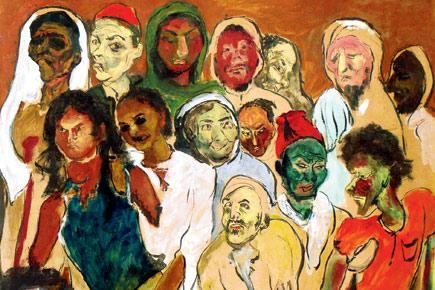As Pundole Art Gallery celebrates its 50th year, it is treading new ground by moving its auction house to Colaba. Dadiba Pundole, the man at the helm of affairs, talks about how the Indian art scene has changed for the better and recalls memorable moments spent with artists such as MF Husain

What prompted you to shift your auction house, Pundole’s, to Colaba?
The move to our new space at Tanna House in Colaba is prompted by the need for us to have a larger dedicated space for our auction business, Pundole’s, which we set up three years ago. Until now, our viewings and auctions were held at the Jamshed Bhabha Theatre in the National Centre for Performing Arts (NCPA). While that is a beautiful space, it isn’t always possible to display all the art works that we sell in the auctions. A dedicated exhibition space will allow us to build displays that show the art in optimal surroundings and for longer periods of time. It will also allow us to do more events throughout the year and engage more with the local art community.

An untitled creation by MF Husain
ADVERTISEMENT
How did you handpick the artifacts for the Fine Art Sale on March 12 at the NCPA and the exhibition preceding it at your gallery till March 11?
Auctions are not curated in the same manner that museum exhibitions are. The material included in the auction is often determined by what potential sellers want to offer in any given sale season. The artists included in an auction are those who have an established market both within India and internationally, and have a certain critical acclaim, which creates a resale demand for their works. For objects included in the antiquities section, the main determinants are quality and date. It goes without saying that authenticity and provenance are paramount and are the primary considerations when looking at any potential work for sale.

The auction features a mix of 11th century stone sculptures, five tangkhas (a kind of painting scroll mounted on dyed brocade) and a range of 20th century paintings. What prompted you to choose such a wide array of artifacts?
All of the items in our sale come under the broad banner of Asian fine art. It allows for some interesting connections to be established between different periods and styles within Indian art over several hundred years. For example, we have a Pala 11th Century stone sculpture showing the 10 avatars of Vishnu, and we have a 20th century South Indian Tanjore painting on the same subject. They are completely different periods and media, but the subject remains consistent. It is interesting to compare the representations and changes in iconography. Similarly, the tangkhas were formerly part of the Jucker Collection (one of the best known collections of Nepalese and Tibetan art worldwide).

All these works will be up for sale at the Fine Art Sale auction on March 12 at the NCPA
What have been your most memorable moments of being associated with Pundole Art Gallery?
I have been able to meet and interact with so many great creative personalities. Some of my best moments have been spent in the company of the late VS Gaitonde, a man of very few words. We spent several afternoons together in his Delhi barsati, listening to classical Western music for several hours together without any conversation at all. Travelling within and outside India with MF Husain taught me a lot, especially the two weeks I spent with him in Paris, whilst he painted the 22 paintings for the Paris Suite. We discussed life and art while visiting museums and walking on the streets.
 |
| Dadiba Pundole |
What kinds of challenges have you faced over the years when it comes to running the gallery and curating art exhibitions?
It’s always a challenge to put together the best exhibition possible and working with willing lenders. Taking a step back, it is always a challenge to keep the stable of artists the gallery represents interesting and current. Galleries and artists alike run the risk of getting too repetitive or too comfortable in the work they show. In an art scene that is changing as rapidly as it is, it is very important to find new talent that offers potential buyers a new and interesting visual experience. Personally, I tend to be quite laidback so keeping up with newer galleries has never been something I have been able to do very well.
What have been the major changes that you have seen in the Indian art scenario?
There is a professionalism that has entered the market with the rise in prices, and the increased attention being paid to Indian artists from international avenues has made it necessary to improve the quality and level of exhibitions. There is also a marked change in the way art is bought and perceived. Even in the 1980s, people bought paintings because it enhanced their lives or to support the artists. It was never thought of as an investment, the way it is sometimes looked at today.
 Subscribe today by clicking the link and stay updated with the latest news!" Click here!
Subscribe today by clicking the link and stay updated with the latest news!" Click here!







